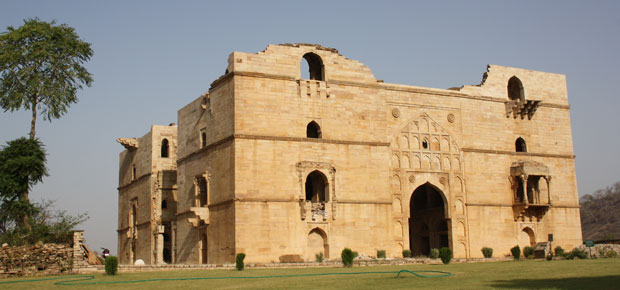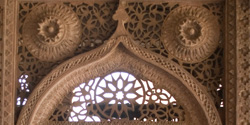Nestled in the Vindhyachal range and situated in the Bundelkhand region of Madhya Pradesh, the town of Chanderi is composed of a labyrinth of lanes full of archaeological remains that bear testimony to its long and eventful past.
Due to the lack of written evidence, there is no actual consensus on when the town of Chanderi was founded. Its history is inextricably linked to myth and folklore. One legend claims that the town of Chanderi was established by Lord Krishna’s cousin, King Shishupal, in the early Vedic period. Another attributes its foundation to King Ched, who is said to have ruled over this region around 600 BC. The most illustrious of all legends, however, is ‘The Miracle of Water’, witnessed by King Kirtipal of the Gurjara-Pratihara dynasty, spurring him on to shift his capital from old Chanderi (Boodhi Chanderi), around 1100 AD, to the present town of Chanderi. It is believed that Kirtipal had been cured of leprosy by the waters of a spring he had chanced upon during a hunting expedition. This led the king to move his capital to the place which he now considered sacred. The same spring is said to be the source of the Parmeshwar pond.
In the 8th century AD, the Gurjara-Pratihara dynasty established its sovereignty over Boodhi Chanderi, making it a sizeable township complete with all the regalia befitting a town. Not much is known about the Gurjara-Pratihara kings of Chanderi, other than the information yielded by an inscription found at Chanderi. This stone inscription originally belonged to a medieval temple which is no longer extant, and is now preserved in the Gwalior museum. It mentions the names of 13 Gurjara-Pratihara kings who ruled over Chanderi, but only describes the life of King Kirtipal, the seventh king, in detail. According to this inscription, King Kirtipal constructed three entities bearing his name — Kirti Durg, Kirti Narayana and Kirti Sagar. Kirti Narayana referred to a Vaishnav temple built either inside the precincts of the fort or near the fort, which, unfortunately, no longer exists. Kirti Sagar alludes to the tank near the fort.












































































